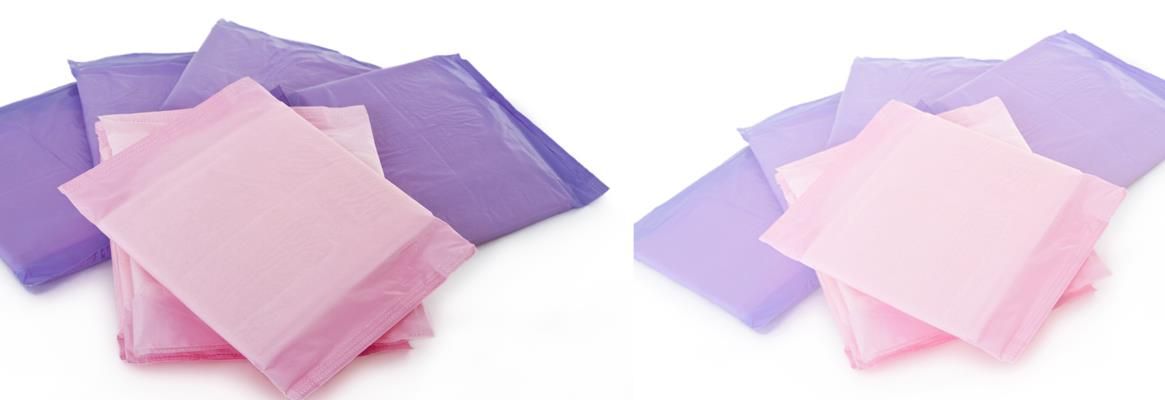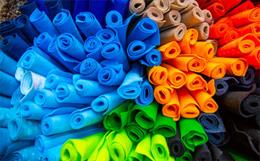Menstrual hygiene products are designed to receive, absorb and to retain menstrual fluid at different conditions of rest and activity, observe Anuradha Barman, Dr S D Asagekar and Pooja Katkar.
The first disposable sanitary napkin, made of cotton and gauge, was put together in 1896. It was successfully commercialised in the United States of America in 1921. As availability of material shrank, there was need to find a material which is easily available and cost-effective. Later, wood pulp was incorporated since it is an absorbent material from soft wood.
The plastic revolution changed the entire nature of the sanitary napkin. Sanitary pads began to be made of Super Absorbent Polymer (SAP) as an absorbent material, with Polyethylene (PE) for back cover. This made it waterproof. The polypropylene top sheet kept it dry. Today's sanitary pads are almost entirely from plastic material. Only a few materials are natural.
2. Potential problems of sanitary napkins:
2.1 Hygiene risk
Improvisation led to introducing SAP to increase absorbency, they began to be made of Polyropelene (PP)-based perforated top sheet and polyethylene sheet as barrier. This improved its functionality. These products seem innocuous but they may be laced with dioxins, petrochemicals, GMO (Genetically Modified Organisms) and fragrances. When these chemicals come in contact with sensitive skin, tissue may get irritated. Dioxins are carcinogenic in nature hence the risk of cancer increases even at very low levels of exposure. Additives such as fragrances, deodorants, absorbency agents, urea and formaldehyde enhance the properties but can cause allergies and skin reactions.
2.2 Disposability:
Polymers in sanitary pads are non-biodegradable material. This may create many serious problems.
Sanitary pads are made of SAP. When these pads are flushed, they block sewage lines as these chemicals absorb all the water in the sewage line.
Disposed used sanitary pads cause occupational hazards for waste pickers who use their bare hands to sort out garbage. This is a health hazard. The common practice is to incinerate used sanitary pads. This releases dioxins and furans, creating an environmental hazard.
2.3 Affordability
In developing countries, the price of sanitary pads is often prohibitive for most of the population. About 70 per cent of Indian women still cannot afford sanitary pads and use unhygienic rags. In a 2012 study by Cheryl Nakata and Kelly Weidner on diffusion and adaptation of sanitary pads to the target group, it was found that working status, education, type of home and monthly household incomes influence the usage of sanitary napkins. The reason behind its cost is the fact that most of the material used is imported from developed places. This ultimately increases the cost of the product.
3.Structure of sanitary napkins:
There are four functional components of a sanitary napkin: (i) fluid acquisition layer (ii) distribution component (iii) absorbent structure (iv) liquid impervious membrane.

Fig1: Shows the conventional design of sanitary napkin
(i) Fluid acquisition layer: A lot of R&D has been done to keep the top surface dry so that it does not cling to the body and fits comfortably. This layer is a perforated film which allows liquid to pass through it quickly into the absorbent structure and stays dry, since the fluid is entrapped in the structure. It thus reduces the chance of leakage.
(ii) Distribution component: This component spreads out the fluid, especially in the longitudinal direction, for better utilisation of the product. By spreading fluid, it increases the probability of more retention of fluid.
(iii) Absorbent structure: One of the main characteristics of sanitary pads is to absorb body fluid and retain it for a long period of time and avoid back flow under pressure.
(iv) Liquid impervious membrane: This is the last layer. It acts as a barrier to prevent fluid from leaking.
4. Performance characteristic of sanitary napkin:
Liquid flow through the interface among these three components (top layer, absorbent layer and barrier film) and mainly within the absorbent component is the key factor in deciding the performance of a sanitary napkin. To understand the working principle of sanitary napkins we have to consider the flow path of fluid through each layer of a sanitary pad.
![]()
![]()
![]()
![]()
![]()
![]()
![]() Acquisition layer (Porous structure)
Acquisition layer (Porous structure)
![]()
![]() Distribution layer
Distribution layer
Barrier layer
Fig 2: Model of absorbent structure
As fluid comes vertically in contact with the first layer, it moves across the fluid acquisition layer to the absorbent layer without spreading in the facing layer. Once fluid reaches the absorbent layer, it spreads and can be held without reversing flow direction.
The first problem in sanitary pads is the interface between acquisition layer and absorbent layer. The acquisition layer is mainly made up of hydrophobic fibre and the absorbent layer is composed of hydrophilic fibre so the fluid must get readily transferred from acquisition layer to absorbing medium. Transfer of fluid from one layer to other will fail if there is not enough intimate contact between the two layers. Any gap will alter the pattern of flow and liquid may spill and lead to failure of the product.
Almost all sanitary pads use fluffed cellulosic pulp as the core component of the absorbent material. This fluff is prepared by defibrillation of unopened compressed cellulosic boards. There is always a chance of some amount of unopened board which gives heterogeneity to the absorbent material. Therefore, uneven flow and retention of fluid will be different from the rest of the area.
Performance of sanitary pads can be evaluated on fluid retention capacity or the amount of fluid sustained after applying pressure. One factor which affects fluid retention is density. Modern commercial sanitary pads are made from super absorbent fibre used in compressed and uncompressed form. Density significantly influences the absorption and stability of the product. A highly compressed fibre will expand on absorption whereas in case of lightly compressed fibre, it will collapse as a result of absorption. So compression of absorbent material is necessary to maintain its structural integrity.
5. Choice of raw material:
(i) Fluid transfer layer: The top layer is designed to transfer fluid from the top cover to the immediate secondary layer. An efficient sanitary pad should be dry for comfort. Traditional sanitary pads were of multilayer cellulosic material. Instead of dripping down, fluid tended to remain at or near the surface. This led to discomfort so one proposed solution has been to use thermoplastic fibre. It has been found that at least 20 per cent of the fibre should be hydrophilic to provide sufficient capillary attraction to pull the fluid through the cover and provide a dry surface.
(ii) Acquisition and distributing layer: As absorbent core cannot absorb fluid immediately, so this layer imbibes the fluid, drawing it away from the point of discharge, distributes it laterally and holds it for the core to absorb. It is generally made up of thermally bonded or air bonded composite non-woven.
(iii) Absorbent layer: The absorbent core of the sanitary pad is generally made up of cellulosic pulp but there have been some changes in the composition. Nowadays, SAP is air laid with pulp and used to increase absorbency. The position of this polymer is important as it may clog the pore of the structure and restrict absorption of fluid, so the SAP polymer is affixed to a tissue and placed between the pulp and back sheet.
(iv) Barrier sheet: The back sheet is a fluid impermeable sheet which prevents leakage, generally made up of polyethylene.
6. Tests to evaluate performance:
6.1 Absorbency test:
This method determines the total absorption capacity of the material. According to the test standard ISO 5405-1980, a sample is laid on a flat level and transparent surface, so that the underside of pad can be observed. Fluid is to be dripped, at the rate of 15ml per minute, so that 30 ml of the fluid maintained at a temperature of 2702C is poured on to the centre of the sanitary pad from a height of approx. 1 to 2 mm. After the napkin has absorbed the full amount of fluid, the standard weight of 1 kg is put above the sample for a minute on the portion where the fluid is absorbed. After that the back and sides of the pad are observed for fluid flowing up. The reading is recorded.
6.2 Fluid Retention capacity:
The measurement of fluid retention is determined by using the standard ASTM D 461. A sample of the pad is to be immersed in fluid at room temperature for five minutes to completely wet it out. The fluid \-logged sanitary napkin is weighted, dried and reweighed. Fluid retention is calculated as a percentage of dry mass.
6.3 Liquid strike through test:
A drop of test solution is allowed to fall on the sample and the time taken for the solution to transport from the upper layer of the napkin to the inner layers of the sample. This is measured by observing the drop closely so that the dull wet spot is seen on the wet area of the sample. All samples should be conditioned for 24 hours before the tests.
Wicking experiments:
Tests can be done according to BS3424 Method 21 (1973) which specifies "determination of resistance to wicking." The experiment is meant to test the ability to take up fluid. One end of the pad is immersed to about 10mm in the synthetic blood and the fluid absorption along the pad is measured in mm after 30 minutes. Wicking is a desired characteristic of a sanitary pad as it allows fluid to spread along the entire absorbent structure.
And so---
Sanitary pad manufacturers are more interested in increasing performance of pads by using material derived from crude petroleum. This has negative environmental impacts and is a health hazard.
Designing a sanitary pad safe to health, biodegradable, sustainable and affordable for lower income class women has become a challenge. An alternative raw material has to be found to replace these synthetic fibres and polymers.
About the authors:
1. Anuradha Barman is a research scholar at Department of Textile, D.K.T.E society's Textile and Engineering Institute, Ichalkaranji, Maharashtra
2. Dr. S.D. Asagekar is faculty at Department of Textile, D.K.T.E society's Textile and Engineering Institute, Ichalkaranji, Maharashtra
3. Pooja Katkar is faculty at Department of Textile, D.K.T.E society's Textile and Engineering Institute, Ichalkaranji, Maharashtra.
References:
1. Kara E. Woeller, Anne E. Hochwalt, "Safety Assessment Of Sanitary Pads With A Polymeric Foam Absorbent Core," Regulatory Toxicology and Pharmacology 73 (2015) 419-424
2. Miranda A. Farage, "A behind the scenes look at the safety assessment of feminine hygiene pads," The New York Academy of Sciences, Jan 2007
3. Ann Mburu and Joseph Kinyaanjui, "Development of a Highly Absorbent and Antibacterial Biodegradable Sanitary Pad from Bamboo," published in National Council for Science and Technology Nairobi, 13-17 May 2013
4. Londiwe Nkiwana and Christopher Chakwana, "Polyester Microfiber for Production of a Comfortable And Affordable Sanitary Pad," African Journal and Apparel Research, Vol.1, Issue 1.
5. Isaac Jacob, Monica Khanna and Neha Yadav, "Beyond Poverty: A Study of Diffusion and Adoption of Feminine Hygiene Products Among Low Income Group Women in Mumbai," Science Direct 148 (2014)291-298
6. Githinji DN, Githaiga JT, Odhiambo SA and Chemweno P, "Development of Sanitary Towel Using Locally Available Natural Fibres for Marginalized Groups in Kenya," ZJST, Special Issue MS.8
7. Bhupender S. Gupta, "Study Of Absorbency In Non Woven: The Role Of Structure Factors And Fluid Characteristic," Papers of International Conference on NONWOVENS, Published in 1992 The Textile Institute North India Section
8. Roshan L. Shishoo, "Analysis Of Structure - Absorbency Relationship In Disposable Hygienic Products," Papers of International Conference on Nonwovens, published in 1992 The Textile Institute North India Section
9. El-Dessouki, "Study of some Non-Woven Hygiene Products Properties Manufactured In Egypt," Journal of American Science 2013, 9 (12)
10. A. Das, V. K. Kothari, S. Makahija and K. Avyaya, "Development of High-Absorbent Light-Weight Sanitary Napkin "Journal of Applied Polymer Science,Vol.107,1466-1470 (2008)
11. Indian Standard IS 5405:1980. Specification for sanitary napkins.
12. Intouch-quality.com: Sanitary Napkin Inspection and quality control in China.
13. ISO-9073-8:1995 "Standard test method for measuring liquid strike through"
14. Christopher Chakwana and LondiweNkiwana, Development of a Low Cost Re-usable Microfibers Sanitary Pad," Textile and Light Industrial Science and Technology, Vol 3, 2014








